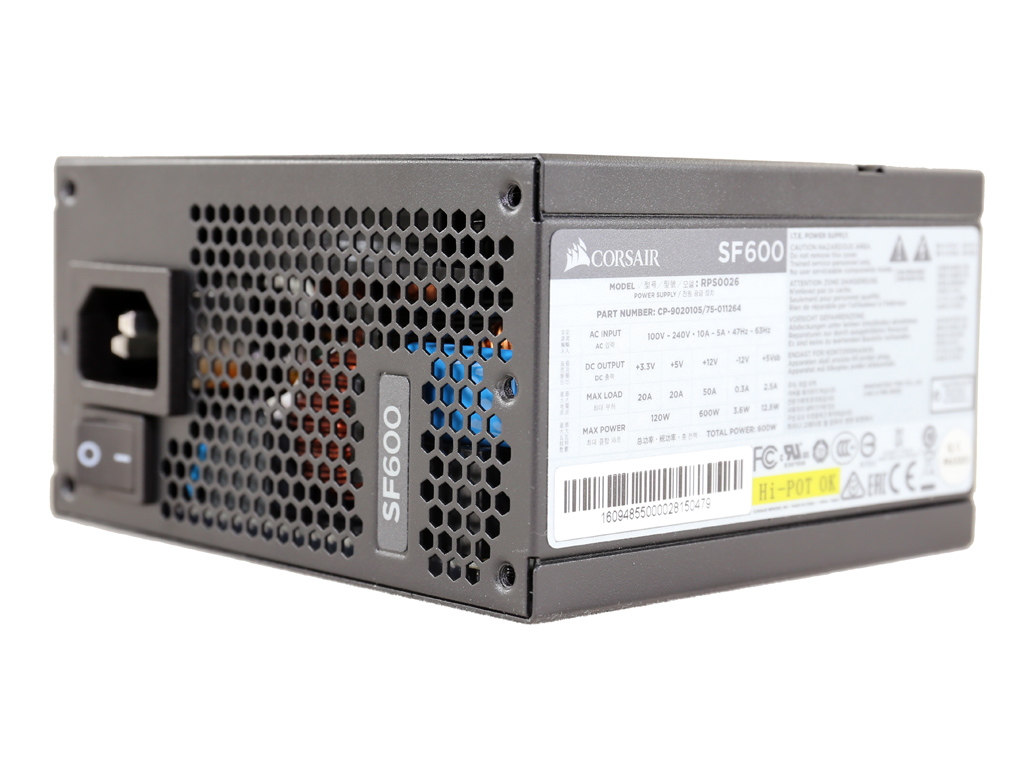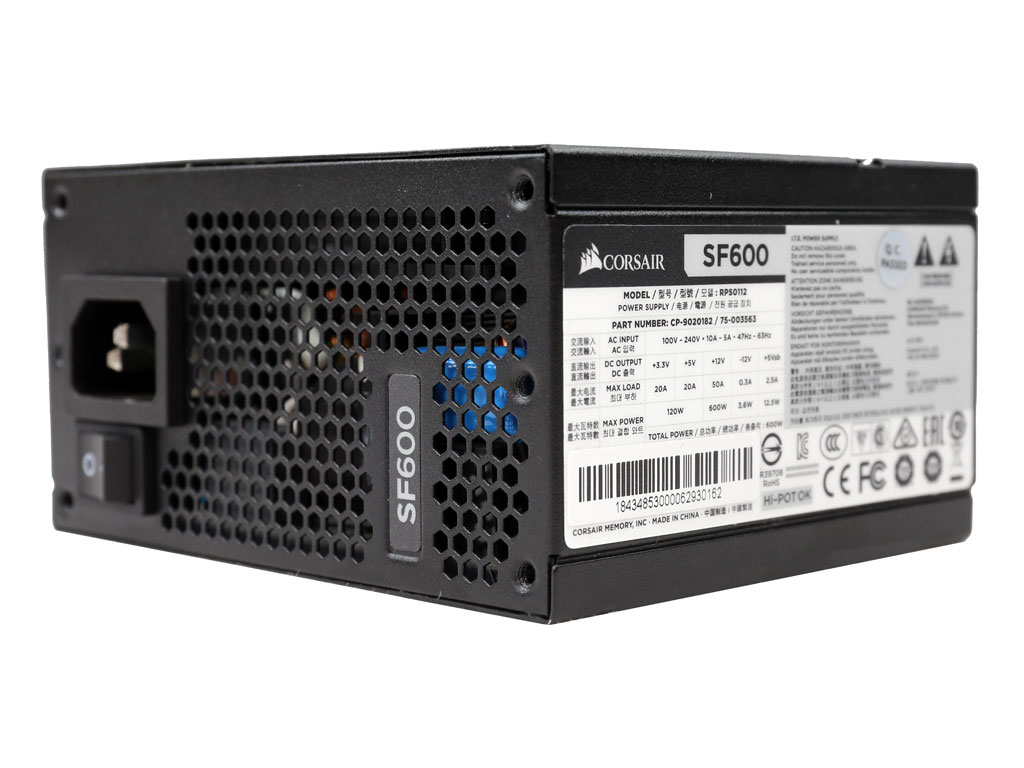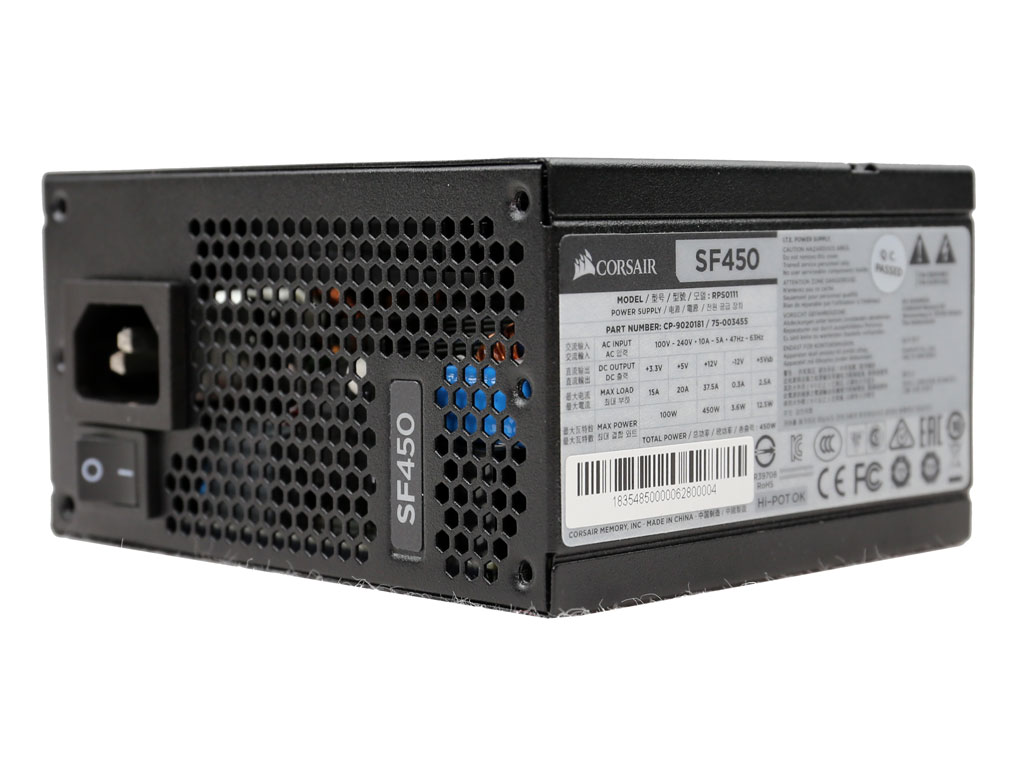Corsair SF600 Platinum PSU Review: Setting The SFX Performance Bar Higher
Why you can trust Tom's Hardware
Load Regulation, Hold-Up Time & Inrush Current
To learn more about our PSU tests and methodology, please check out How We Test Power Supply Units.
Primary Rails And 5VSB Load Regulation
Load Regulation testing is detailed here.
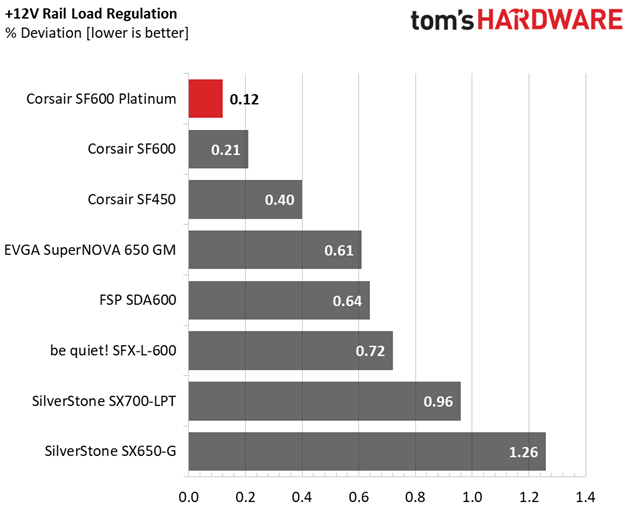
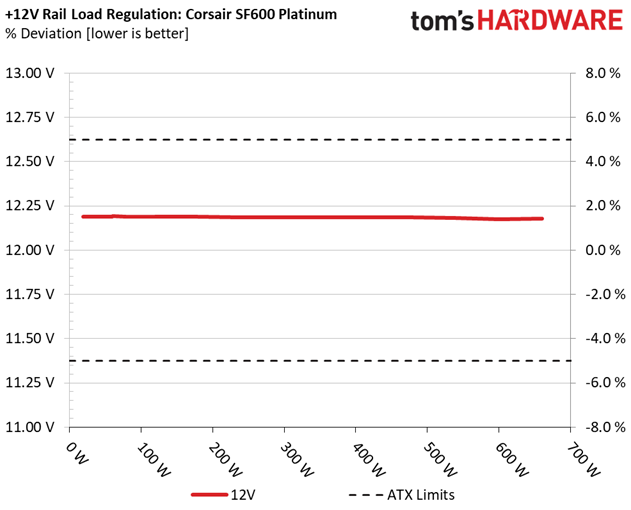
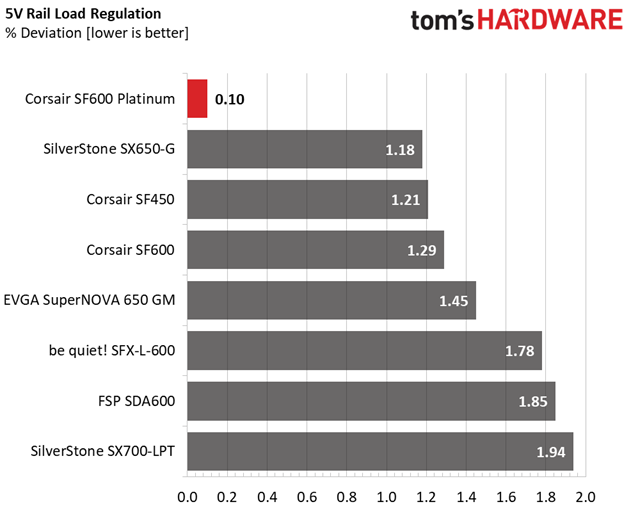
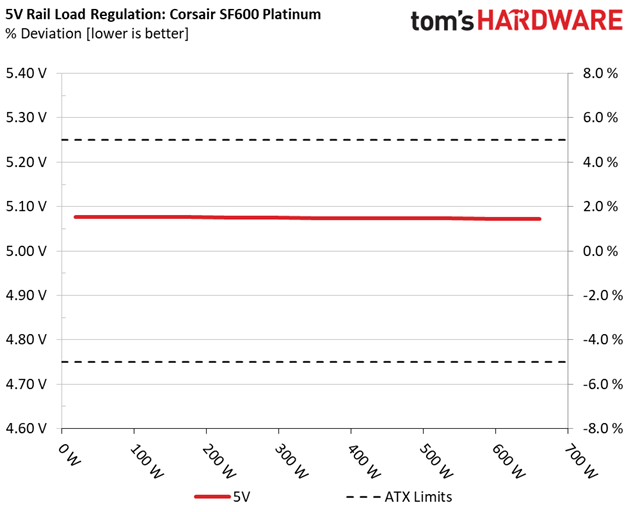
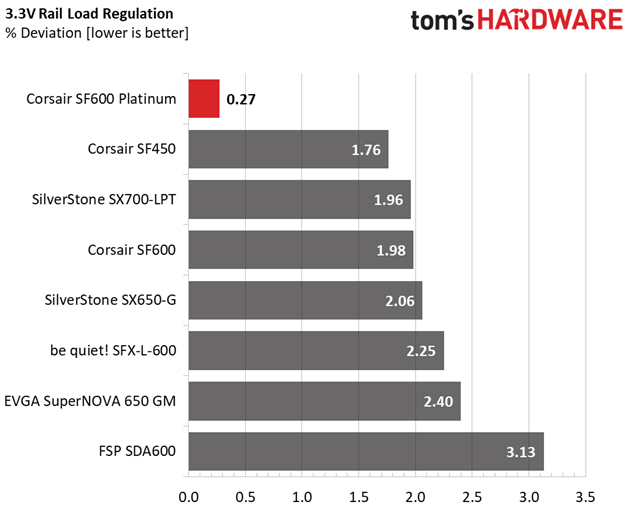
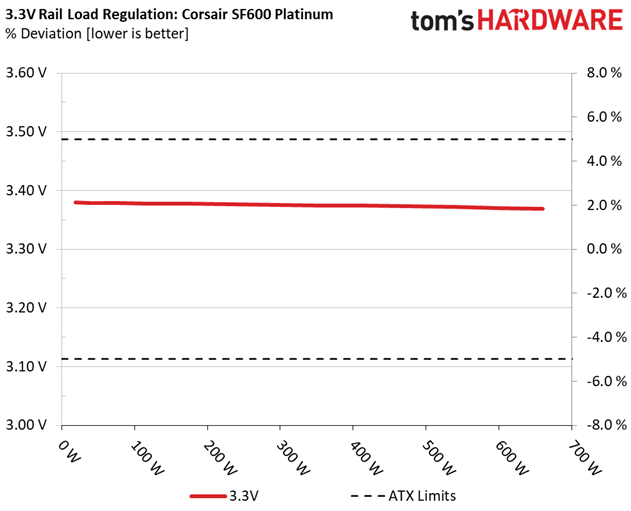
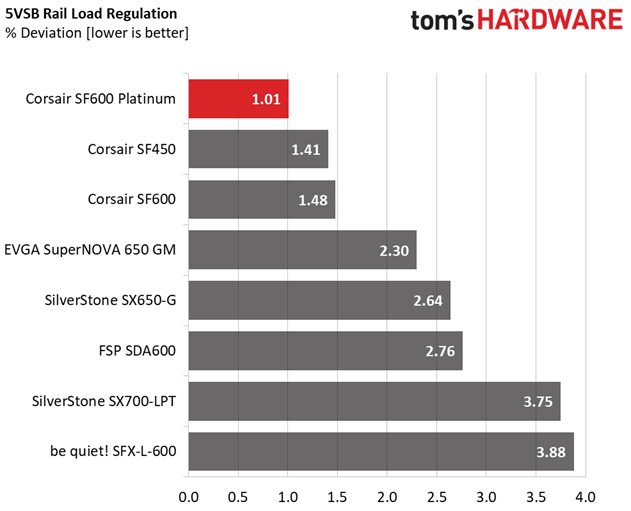
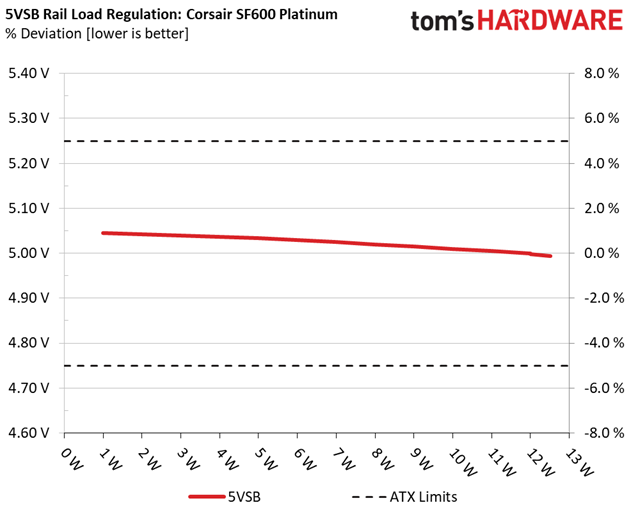
Hold-Up Time
Our hold-up time tests are described in detail here.
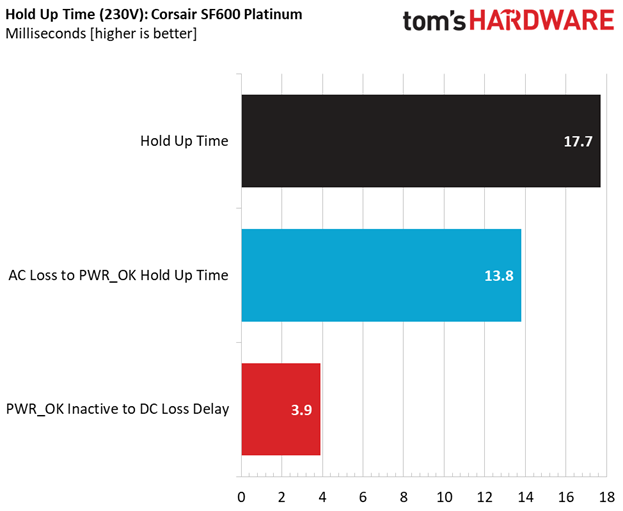
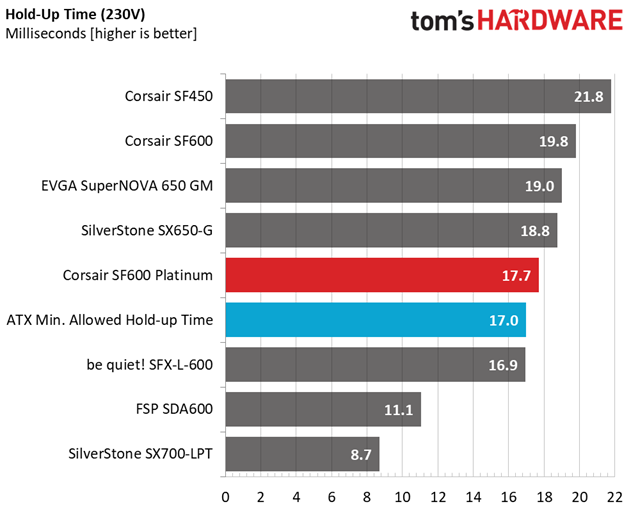
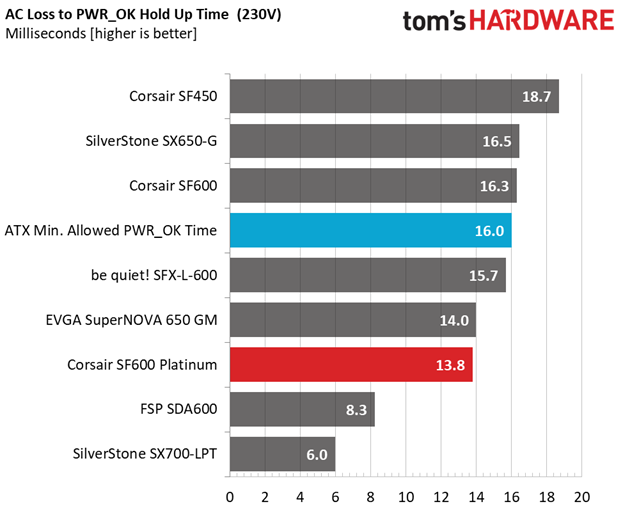
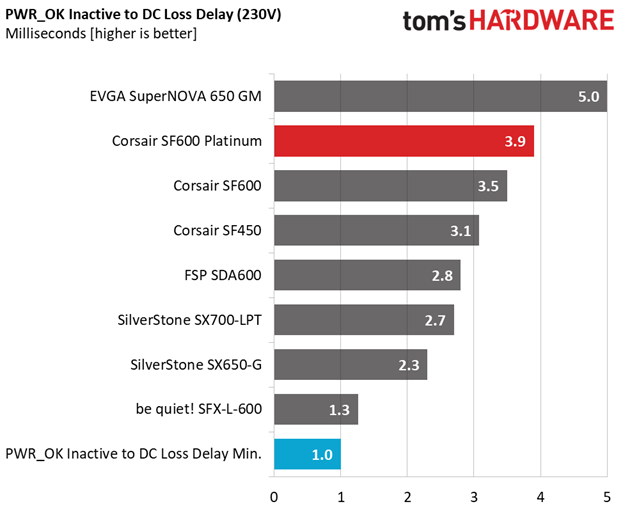
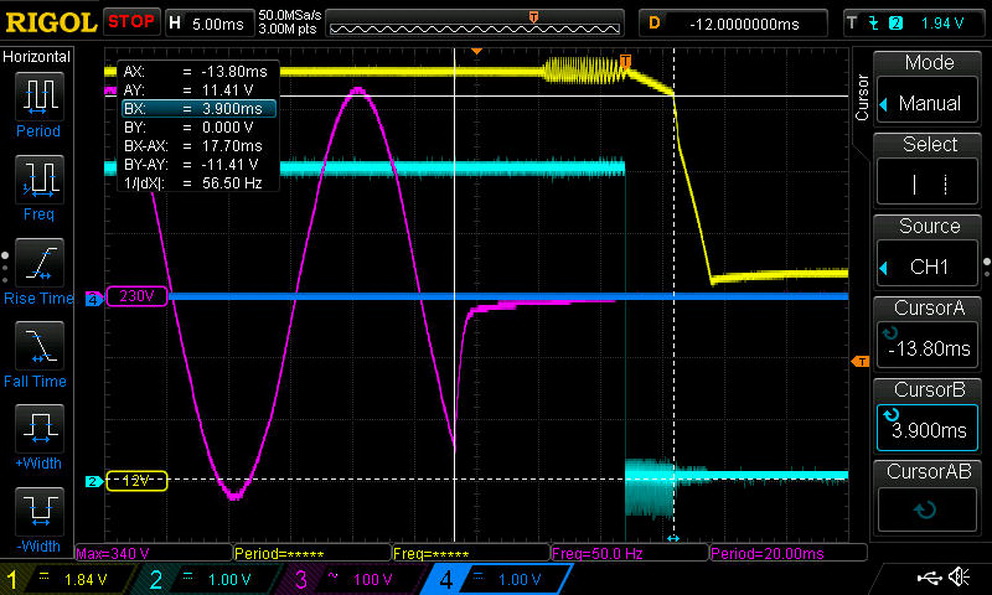
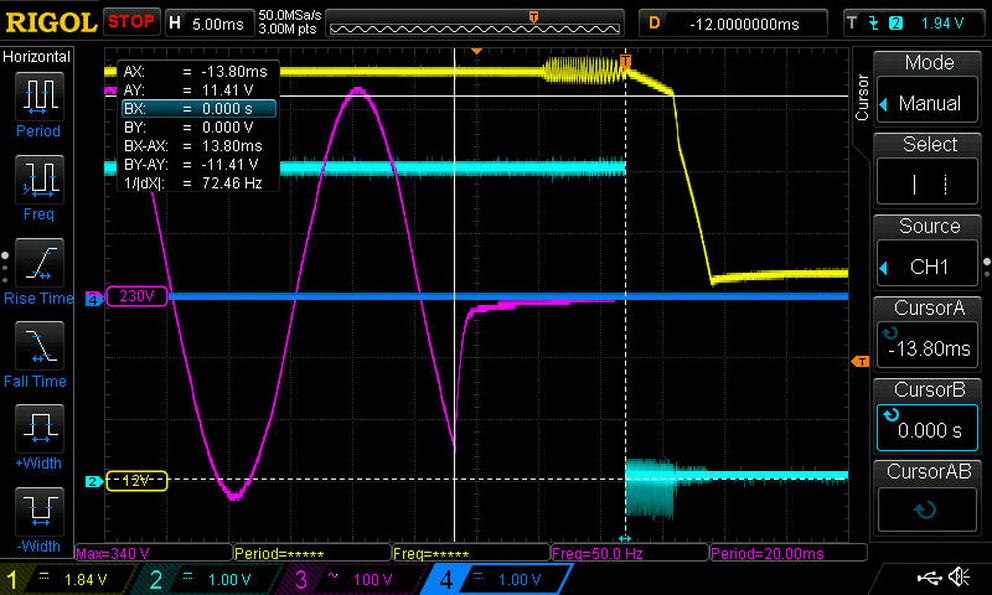
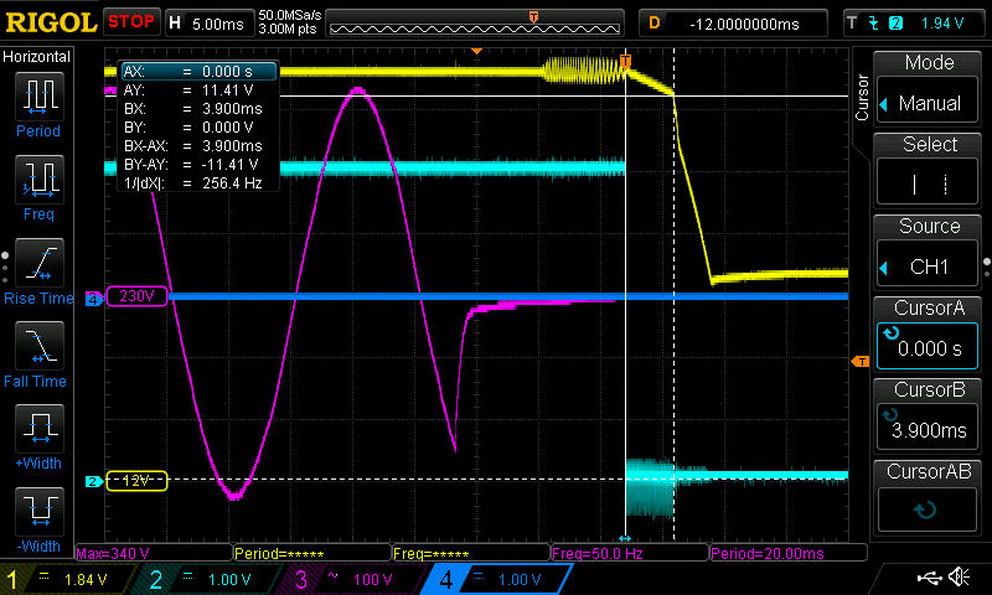
The hold-up time we measured was longer than 17ms. However, the power-good signal's duration didn't reach the 16ms mandated by the ATX specification. At least it's accurate.
Inrush Current
For details on our inrush current testing, please click here.
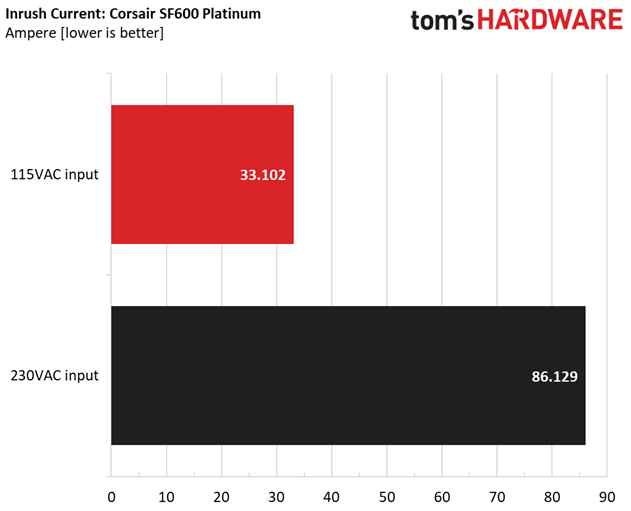
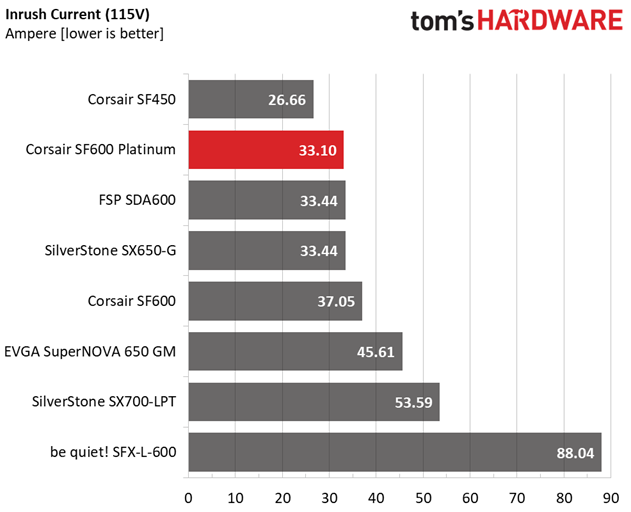
With 115V input, the inrush current is low. It's much higher with 230V input, though.
Load Regulation And Efficiency Measurements
The first set of tests reveals the stability of the voltage rails and the SF600’s efficiency. The applied load equals (approximately) 10 to 110 percent of the PSU's maximum load in increments of 10 percentage points.
Get Tom's Hardware's best news and in-depth reviews, straight to your inbox.
We conducted two additional tests. During the first, we stressed the two minor rails (5V and 3.3V) with a high load, while the load at +12V was only 0.1A. This test reveals whether a PSU is compatible with Intel's C6/C7 sleep states or not. In the second test, we determined the maximum load the +12V rail could handle with minimal load on the minor rails.
| Test # | 12V | 5V | 3.3V | 5VSB | DC/AC (Watts) | Efficiency | Fan Speed | PSU Noise | Temps (In/Out) | PF/AC Volts |
|---|---|---|---|---|---|---|---|---|---|---|
| 1 | 3.160A | 1.970A | 1.953A | 0.993A | 60.123 | 85.790% | 0 RPM | <6.0 dB(A) | 47.48°C | 0.976 |
| 12.191V | 5.077V | 3.379V | 5.034V | 70.082 | 39.28°C | 115.29V | ||||
| 2 | 7.295A | 2.955A | 2.931A | 1.193A | 119.829 | 90.149% | 0 RPM | <6.0 dB(A) | 49.22°C | 0.969 |
| 12.190V | 5.077V | 3.378V | 5.029V | 132.924 | 40.27°C | 115.22V | ||||
| 3 | 11.791A | 3.448A | 3.406A | 1.393A | 179.731 | 91.489% | 0 RPM | <6.0 dB(A) | 50.81°C | 0.976 |
| 12.189V | 5.077V | 3.378V | 5.025V | 196.451 | 41.22°C | 115.14V | ||||
| 4 | 16.292A | 3.943A | 3.912A | 1.594A | 239.754 | 91.860% | 1319 RPM | 14.0 dB(A) | 41.80°C | 0.983 |
| 12.186V | 5.075V | 3.376V | 5.020V | 260.998 | 51.80°C | 115.16V | ||||
| 5 | 20.463A | 4.928A | 4.889A | 1.795A | 299.853 | 91.835% | 1334 RPM | 14.3 dB(A) | 42.03°C | 0.987 |
| 12.185V | 5.075V | 3.375V | 5.015V | 326.514 | 52.93°C | 115.07V | ||||
| 6 | 24.632A | 5.914A | 5.868A | 1.996A | 359.948 | 91.516% | 1544 RPM | 18.9 dB(A) | 42.80°C | 0.990 |
| 12.185V | 5.074V | 3.374V | 5.010V | 393.319 | 54.23°C | 115.00V | ||||
| 7 | 28.762A | 6.900A | 6.847A | 2.198A | 419.635 | 90.720% | 1812 RPM | 23.0 dB(A) | 43.23°C | 0.992 |
| 12.187V | 5.074V | 3.374V | 5.005V | 462.562 | 55.16°C | 114.90V | ||||
| 8 | 32.969A | 7.886A | 7.826A | 2.400A | 480.138 | 90.230% | 2410 RPM | 32.1 dB(A) | 43.71°C | 0.993 |
| 12.185V | 5.074V | 3.373V | 5.000V | 532.128 | 56.12°C | 114.91V | ||||
| 9 | 37.504A | 8.380A | 8.304A | 2.401A | 539.423 | 89.731% | 2931 RPM | 37.1 dB(A) | 44.51°C | 0.994 |
| 12.183V | 5.073V | 3.372V | 4.998V | 601.156 | 57.46°C | 114.82V | ||||
| 10 | 42.136A | 8.876A | 8.814A | 2.504A | 600.275 | 89.180% | 3021 RPM | 37.6 dB(A) | 45.23°C | 0.995 |
| 12.176V | 5.072V | 3.370V | 4.994V | 673.104 | 58.69°C | 114.73V | ||||
| 11 | 47.056A | 8.878A | 8.818A | 2.505A | 660.338 | 88.459% | 3839 RPM | 44.3 dB(A) | 46.16°C | 0.996 |
| 12.179V | 5.072V | 3.369V | 4.992V | 746.489 | 60.34°C | 114.73V | ||||
| CL1 | 0.151A | 14.006A | 14.000A | 0.000A | 120.341 | 86.334% | 904 RPM | 7.1 dB(A) | 43.40°C | 0.970 |
| 12.201V | 5.081V | 3.381V | 5.037V | 139.390 | 55.07°C | 115.30V | ||||
| CL2 | 50.024A | 1.003A | 1.000A | 1.000A | 622.662 | 89.514% | 3459 RPM | 41.2 dB(A) | 45.72°C | 0.995 |
| 12.178V | 5.072V | 3.369V | 5.014V | 695.602 | 59.51°C | 114.80V |
These load regulation numbers are super-tight, setting an example for all of the other high-end SFX-based PSUs to follow. When it comes to efficiency, the 80 PLUS Platinum standard's requirements are satisfied under 20% and full loads. It comes close to 92% at a 50% load. Keep in mind that we test at much higher ambient temperatures than the 80 PLUS organization, so lower efficiency readings are expected.
The cooling fan's profile is very relaxed. It only gets crazy with 110% load and in an ambient environment warmer than 46°C. Moreover, the semi-passive mode lasts up to our third test, since load on the minor rails remains low. As the load increases on those rails, the fan kicks in to cool the DC-DC converters responsible for generating those rails.
MORE: Best Power Supplies
MORE: How We Test Power Supplies
MORE: All Power Supply Content
Current page: Load Regulation, Hold-Up Time & Inrush Current
Prev Page Teardown and Component Analysis Next Page Efficiency, Temperature & Noise
Aris Mpitziopoulos is a contributing editor at Tom's Hardware, covering PSUs.
-
Co BIY Less than 1% efficiency difference between Gold and Platinum ? Hard to make that pay under any normal use scenario.Reply
Glad to see that they made several other improvements for the Platinum model. -
iankphone I just completed my ncase-m1 build with this. It's really good.Reply
8700K, 2080Ti. Like a boss. I'm not overclocking however (insufficient cooling for that). -
Dark Lord of Tech Reply21685936 said:Just wait now for the SF750 to get reviewed :)
Looking forward to it. I will most likely get one for my next setup. -
smitty2k1 Did you test the SF600 platinum with Vega graphics cards? I'm getting the OCP to trip on my just running the Vega 56 in turbo mode. The same thing was happening with my older Silverstone SX-650G power supply, and Silverstone confirmed that they had made an engineering change to fix the OCP tripping.Reply
It only happens in Destiny 2, no other games. I'm curious if this is a widespread issue, or something else with my system. It seems the Vega cards are tough on PSUs.
